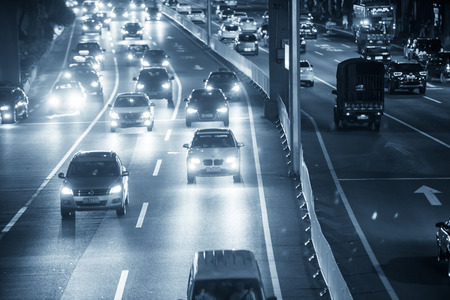1. Introduction to Right of Way
Understanding the “right of way” is essential for every driver, cyclist, and pedestrian on the road. It refers to the legal right of a vehicle or person to proceed before others in certain traffic situations. Knowing who has the right of way helps prevent accidents, reduces confusion, and keeps traffic moving smoothly.
Why Right of Way Matters
Right of way rules exist to establish order on the roads. Without these guidelines, intersections, pedestrian crossings, and merging lanes would be chaotic and dangerous. Properly following right of way rules can significantly decrease the chances of collisions and ensure that everyone reaches their destination safely.
Basic Right of Way Principles
Although specific right of way rules vary by state, some general principles apply across the United States. These include yielding to pedestrians at crosswalks, allowing vehicles on the main road to continue when merging, and giving priority to emergency vehicles with lights and sirens activated.
Common Right of Way Scenarios
Here are some everyday driving situations where right of way is crucial:
| Situation | Who Has the Right of Way? |
|---|---|
| At an intersection with stop signs | The driver who arrives first, or if arriving at the same time, the driver on the right |
| At a four-way stop | The first vehicle to arrive, or if arriving simultaneously, the vehicle on the right |
| Making a left turn | Oncoming traffic and pedestrians have the right of way |
| Merging onto a highway | Vehicles already on the highway have the right of way |
| Emergency vehicles approaching | All other vehicles must yield and pull over |
Understanding Local Laws
While these general rules apply in most places, it’s always important to check local traffic laws. Different states may have variations in laws regarding four-way stops, roundabouts, and pedestrian right of way. Staying informed about local regulations ensures you drive safely and follow the law correctly.
2. Right of Way at Intersections
Understanding who has the right of way at intersections is crucial for preventing accidents and ensuring smooth traffic flow. Different types of intersections have different rules. Let’s break them down.
Stop Sign Intersections
At intersections with stop signs, the right of way depends on the type of stop sign setup.
Two-Way Stop
When two roads intersect and only one has stop signs, drivers on the road without stop signs have the right of way. Those at the stop sign must wait for a safe gap before proceeding.
Four-Way Stop
For four-way stops, follow these rules:
- The first vehicle to arrive at the stop sign has the right of way.
- If two vehicles arrive at the same time, the vehicle on the right has the right of way.
- If two vehicles face each other and arrive at the same time, vehicles going straight or turning right have the right of way over those turning left.
Traffic Signal Intersections
At intersections controlled by traffic lights, follow these basic right-of-way rules:
- Green light means you have the right of way, but always yield to pedestrians.
- Yellow light means slow down and prepare to stop unless it’s unsafe to do so.
- Red light means stop. If turning right on red is allowed, you must yield to traffic and pedestrians before turning.
- Left turns on a green light must yield to oncoming traffic unless there’s a green arrow.
Uncontrolled Intersections
Uncontrolled intersections, where there are no stop signs or traffic signals, rely on common right-of-way rules:
- Always slow down and proceed with caution.
- The driver on the right has the right of way when two vehicles arrive at the same time.
- Drivers going straight have the right of way over those turning left.
- Yield to pedestrians and any vehicles already in the intersection.
Quick Reference Table
| Intersection Type | Who Has the Right of Way? |
|---|---|
| Two-Way Stop | Vehicles on the road without stop signs |
| Four-Way Stop | First to arrive; if tied, vehicle on the right |
| Traffic Signal – Green Light | Vehicles with green light (yield to pedestrians) |
| Traffic Signal – Left Turn on Green | Must yield to oncoming traffic unless a green arrow is present |
| Uncontrolled Intersection | Vehicle on the right when arriving simultaneously |
Knowing these right-of-way rules can help drivers navigate intersections safely and confidently.
![]()
3. Pedestrians and Right of Way
Understanding when pedestrians have the right of way is essential for both drivers and those on foot. In the U.S., traffic laws typically give pedestrians priority in certain situations, but both parties need to be aware of their responsibilities to ensure safety.
When Do Pedestrians Have the Right of Way?
Pedestrians generally have the right of way in marked crosswalks, whether at intersections with traffic signals or at mid-block crosswalks. However, specific rules vary depending on location and circumstances.
| Situation | Who Has the Right of Way? |
|---|---|
| Marked crosswalk with a pedestrian signal showing “WALK” | Pedestrian |
| Marked crosswalk without signals | Pedestrian (unless otherwise directed by an officer or sign) |
| Unmarked crosswalk at an intersection | Pedestrian |
| Crossing outside a crosswalk (“jaywalking”) | Vehicle (pedestrians must yield) |
| Crosswalk with a red “DON’T WALK” signal | Vehicle |
Common Pedestrian-Related Traffic Situations
Crosswalks at Intersections
Drivers must always yield to pedestrians in marked or unmarked crosswalks at intersections. Even when making a legal turn on a green light or after stopping at a stop sign, drivers need to check for pedestrians crossing.
Mid-Block Crosswalks
Many cities have crosswalks located between intersections, often with flashing signals when pedestrians are crossing. In these cases, drivers must slow down and stop to allow pedestrians to cross safely.
Residential Areas and School Zones
Pedestrians, especially children, may unexpectedly enter the roadway in residential areas and near schools. Drivers should always reduce speed, remain alert, and be prepared to stop.
Parking Lots and Driveways
Pedestrians often walk behind or between vehicles in parking lots and driveways. Drivers should move cautiously, checking blind spots and mirrors before backing out.
Jaywalking
While some cities enforce jaywalking laws strictly, pedestrians should always use designated crosswalks whenever possible. If crossing outside a crosswalk, pedestrians must yield to vehicles.
Both drivers and pedestrians share the responsibility of preventing accidents by following traffic laws and staying alert in all situations.
4. Special Vehicles and Right of Way
Not all vehicles on the road are treated the same when it comes to the right of way. Some vehicles have special rules, including emergency vehicles, school buses, and other designated vehicles. Understanding these rules is crucial for keeping roads safe and avoiding violations.
Emergency Vehicles
Emergency vehicles, such as police cars, fire trucks, and ambulances, always have the right of way when responding to an emergency with their lights and sirens on. Drivers should take immediate action by pulling over to the right and stopping until the emergency vehicle has passed.
What to Do When an Emergency Vehicle Approaches
| Situation | Action to Take |
|---|---|
| On a two-lane road | Pull over to the right and stop completely. |
| On a multi-lane road | Move to the right lane and stop if safe to do so. |
| At an intersection | Remain stopped until the emergency vehicle passes. |
School Buses
School buses have strict right of way rules to protect children. If a school bus is stopped with its stop sign extended and red lights flashing, all vehicles in both directions must stop unless separated by a divided highway.
School Bus Stopping Laws
| Road Type | Stopping Requirement |
|---|---|
| Two-lane road | All vehicles in both directions must stop. |
| Multi-lane road (without a divider) | All vehicles in both directions must stop. |
| Divided highway | Only vehicles behind the bus must stop. |
Other Special Vehicles
Some other vehicles also have special right of way rules, including:
- Construction Vehicles: In some work zones, construction vehicles may have the right of way. Obey all posted signs and signals.
- Funeral Processions: Many states give funeral processions the right of way. Other drivers should yield and avoid cutting through the procession.
- Trains and Rail Crossings: Trains always have the right of way at railroad crossings. Never try to beat a train at a crossing.
Key Takeaways
Understanding the right of way for special vehicles helps prevent accidents and ensures safety for emergency responders, school children, and other road users. Always stay alert and follow the appropriate rules when these vehicles are present on the road.
5. Common Right of Way Mistakes and How to Avoid Them
Understanding right of way rules is crucial for preventing accidents and keeping traffic flowing smoothly. However, many drivers still make common mistakes that can lead to confusion and dangerous situations. Below, we highlight some of these errors and provide practical tips on how to navigate these situations safely.
Failing to Yield at Four-Way Stops
At a four-way stop, the driver who reaches the intersection first has the right of way. If two vehicles arrive at the same time, the driver on the right goes first. Many drivers either hesitate or proceed out of turn, causing gridlock or near-misses.
How to Avoid This Mistake:
- Always stop completely and observe your surroundings.
- Let the first arriving vehicle proceed before you go.
- If arriving at the same time as another driver, yield to the vehicle on your right.
Not Yielding to Pedestrians
Pedestrians generally have the right of way at marked crosswalks and intersections. Drivers who don’t slow down or stop when pedestrians are crossing risk accidents and legal penalties.
How to Avoid This Mistake:
- Be aware of crosswalks and pedestrian signals.
- Slow down when approaching intersections and always check for people crossing.
- Never assume pedestrians will stop for you—yield to them at all times.
Confusion at Roundabouts
Roundabouts can be tricky, especially for drivers unfamiliar with yielding rules. A common mistake is entering the roundabout without yielding to vehicles already inside.
How to Avoid This Mistake:
- Always yield to traffic already inside the roundabout.
- Merge only when there is a safe gap.
- Signal your exit to alert other drivers.
Misjudging When to Yield on Left Turns
When making a left turn at an intersection, drivers must yield to oncoming traffic unless they have a green arrow. Some drivers misjudge the speed of approaching vehicles and turn too soon, leading to collisions.
How to Avoid This Mistake:
- Wait for a clear and safe opening before turning left.
- Yield to oncoming traffic unless you have a green arrow.
- Be extra cautious when visibility is low due to weather or obstacles.
Ignoring Yield Signs
Yield signs indicate that drivers must give the right of way to others before proceeding. Some drivers either ignore these signs or misunderstand when they need to stop.
| Common Yield Sign Mistakes | How to Fix Them |
|---|---|
| Not slowing down when approaching a yield sign | Always reduce speed and be ready to stop if necessary. |
| Proceeding without checking for crossing traffic | Look both ways and confirm it is safe before moving. |
| Assuming other drivers will stop for you | Yield means you must allow others to go if they have the right of way. |
Final Thoughts
By understanding and avoiding these right of way mistakes, drivers can ensure safer roads for everyone. Always stay alert, be patient, and follow the rules to prevent accidents and unnecessary conflicts on the road.

